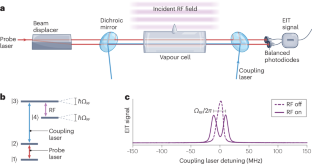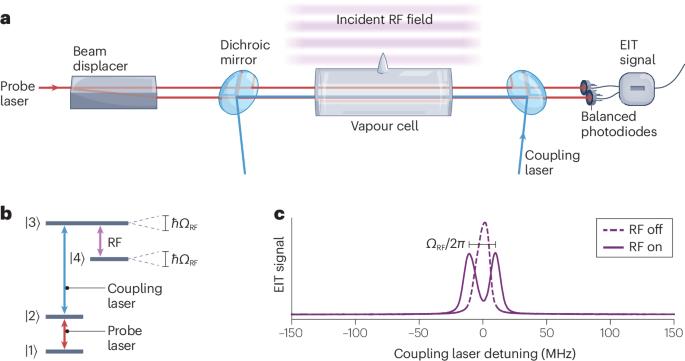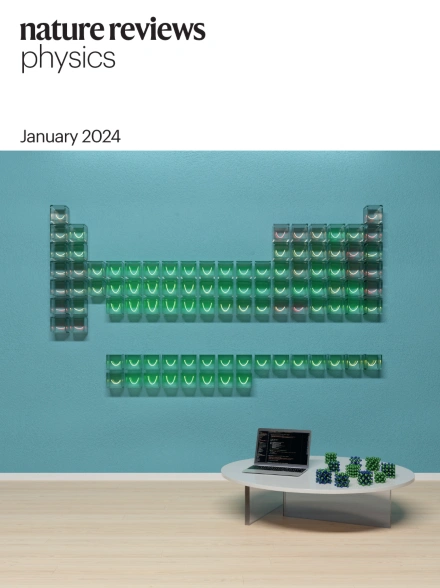原子蒸汽中碱原子的里德伯态作为 SI 可追踪场探测器和通信接收器
IF 44.8
1区 物理与天体物理
Q1 PHYSICS, APPLIED
引用次数: 0
摘要
碱原子的雷德贝格态对电场高度敏感,因为它们的电子波函数具有很大的空间范围,导致静态电场的极化率很大,而时变电场的过渡偶极矩很大。在过去的几年中,雷德贝格原子已被用作进行自校准和 SI 可追溯电场测量的灵敏探针。在本技术综述中,我们将介绍和研究室温原子蒸汽中基于里德伯原子的电学现状。我们涵盖了这一领域的基本原理、实验技术、最新进展和应用,为有兴趣利用雷德贝格原子进行精确电场测量的研究人员提供了全面的资源。本文章由计算机程序翻译,如有差异,请以英文原文为准。


Rydberg states of alkali atoms in atomic vapour as SI-traceable field probes and communications receivers
Rydberg states of alkali atoms are highly sensitive to electric fields because their electron wavefunction has a large spatial extent, leading to large polarizabilities for static fields and large transition dipole moments for time-varying fields. Over the past few years, Rydberg atoms have been used as sensitive probes for performing self-calibrated and SI-traceable electric field measurements. In this Technical Review, we introduce and examine the current state of Rydberg atom-based electrometry in room-temperature atomic vapours. We cover the fundamental principles, experimental techniques, recent advancements, and applications of this field, providing a comprehensive resource for researchers interested in utilizing Rydberg atoms for precise electric field measurements. Rydberg atoms are sensitive to radio frequency electric fields, which make them useful as sensors. This Technical Review discusses Rydberg sensors that measure the amplitude and phase of electric fields at frequencies from d.c. to THz, as well as technological applications of these sensors.
求助全文
通过发布文献求助,成功后即可免费获取论文全文。
去求助
来源期刊

Nature Reviews Physics
Multiple-
CiteScore
47.80
自引率
0.50%
发文量
122
期刊介绍:
Nature Reviews Physics is an online-only reviews journal, part of the Nature Reviews portfolio of journals. It publishes high-quality technical reference, review, and commentary articles in all areas of fundamental and applied physics. The journal offers a range of content types, including Reviews, Perspectives, Roadmaps, Technical Reviews, Expert Recommendations, Comments, Editorials, Research Highlights, Features, and News & Views, which cover significant advances in the field and topical issues. Nature Reviews Physics is published monthly from January 2019 and does not have external, academic editors. Instead, all editorial decisions are made by a dedicated team of full-time professional editors.
 求助内容:
求助内容: 应助结果提醒方式:
应助结果提醒方式:


